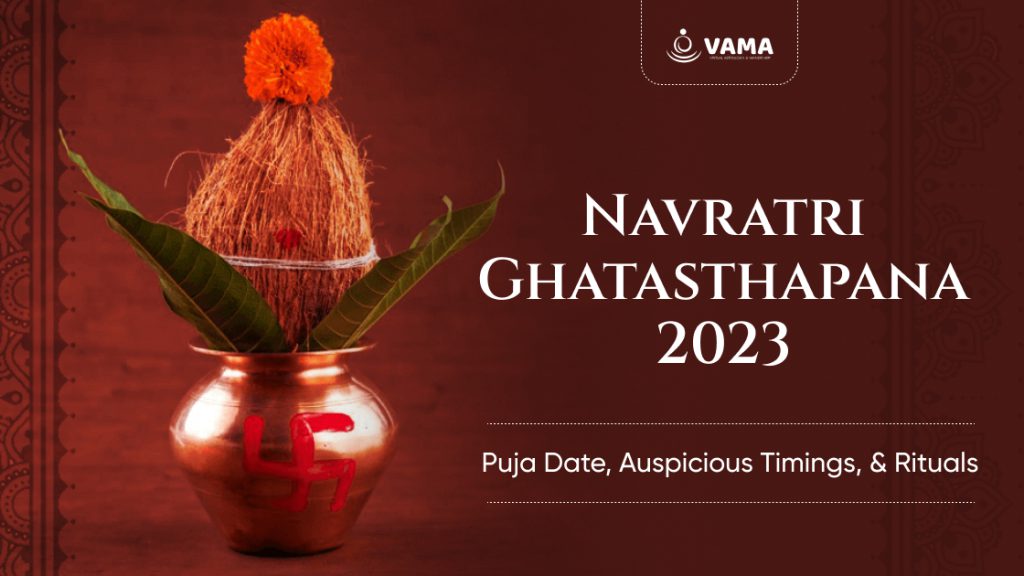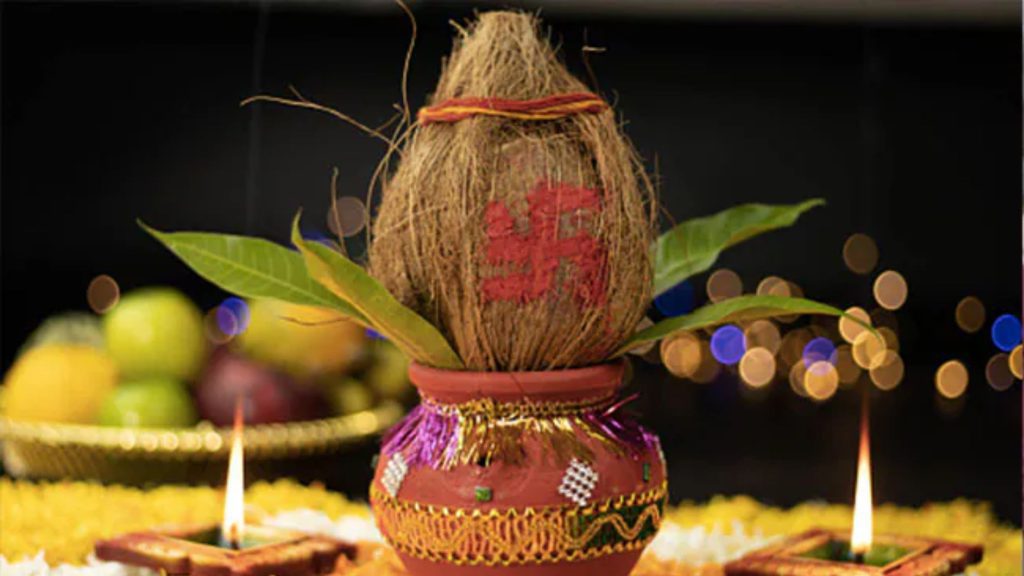2023 Shardiya Navratri Ghatasthapana: Pooja, Vidhi, Significance and Completion
Today we will delve into the intricacies of Ghat Sthapana Pooja 2023, exploring its historical context, significance, and the step-by-step process involved in performing this sacred tradition.

Ghatasthapana 2023: As the autumn leaves start to fall and a crispness fills the air, Hindus worldwide prepare to celebrate Navratri, a nine-night festival dedicated to the divine feminine energy known as Shakti. One of the most significant rituals that marks the beginning of this festival is Ghatasthapana. The vibrant festival of Navratri, celebrated with enthusiasm and devotion by millions of Hindus, is a time of profound spirituality and cultural significance. At the heart of Navratri lies the tradition of Ghat Sthapana, also known as Ghatasthapana, a ritual that invokes the blessings of Goddess Durga.
Today we will delve into the intricacies of Ghat Sthapana Pooja 2023, exploring its historical context, significance, and the step-by-step process involved in performing this sacred tradition.

Let us first understand the ritual itself. What is Ghatasthapana?
Ghatasthapana, also known as Kalash Sthapana, is the ceremonial installation of a sacred pot (kalash), symbolising the presence of the Goddess Durga in our homes. It’s a momentous occasion that leads to the commencement of Navratri, a time of devotion, fasting, and cultural celebrations.
Significance of Ghatasthapana
Ghatasthapana carries a deep spiritual significance.The kalash represents divine energy, and its installation is believed to invite the blessings of Goddess Durga into one’s home. It’s a powerful ritual that signifies the renewal of life and the triumph of good over evil. Here’s why it’s considered to be significant:
- Symbol of Divinity: The Kalash, a metal or earthen pot filled with water, symbolises divinity and represents Lord Varuna (the god of water). It indicates the presence of the divine in the home.
- Life Force: The water in the Kalash symbolises the life force (prana), and the coconut atop it represents the head or ego.The mango leaves, which surround the coconut, signify the five elements of nature.
- Auspiciousness: Ghatasthapana is performed to invoke positive energies and blessings of deities into the home. It’s believed to purify the environment and ward off negativity, as we prepare to embark on a devotional journey for the next 9 days.
- Worship of Goddess: During Navratri, Ghatasthapana marks the commencement of the nine-day worship of Goddess Durga.The pot symbolises her divine presence.
- Unity of Mankind with Elements: The arrangement of the Kalash with water, coconut, and leaves represents the unity of the five elements – earth, water, fire, air, and ether, which are essential for life.
- Cultural Tradition: Ghatasthapana is an age-old cultural tradition that fosters a sense of community and spirituality, bringing families and communities together in worship and celebration.
- Fertility and Prosperity: It is also associated with fertility and prosperity, signifying abundance and the nurturing of life.
- Continuity of Tradition: Performing Ghatasthapna ensures the continuation of traditional customs and rituals, passing them down through generations.

How to Perform Ghatasthapana?
Performing Ghatasthapana requires meticulous preparation and adherence to traditions. Here’s a simplified guide:
- Choosing the Right Time: Ghatasthapana is performed on the first day of Navratri, known as Pratipada. So, according to the Hindu Panchang, the timing of Ghatasthapana is between 11:44 a.m. to 12:30 p.m., on 15 October 2023.
- Selecting the Kalash: The kalash, a brass or clay pot, is filled with holy water, betel nut, coins, and leaves. A coconut is placed on top and adorned with a red cloth.
- The Setup: A soil bed is prepared, and the kalash is placed atop it. A small rectangular platform is built around the kalash, and barley seeds are sown on it.
- Invocation: Prayers are offered to invoke the divine presence, and mantras are chanted to please the deity.
- Daily Observance: Throughout Navratri, devotees maintain the kalash, watering the barley seeds and lighting a lamp near it daily.
Ghatasthapana signifies the commencement of a spiritual journey, a quest for self-purification, and the celebration of the feminine divine. It is a time of fasting, meditation, and devotion to Goddess Durga and her various forms. As you embark on this sacred journey, may your home be filled with divine blessings, and may you find inner strength and renewal during these auspicious nine nights of Navratri.
Completion of the Ritual
The conclusion of the Ghatasthapana ritual typically occurs on the tenth day of Navratri, known as Vijayadashami or Dussehra. On this day, the sacred pot or Kalash established during Ghatasthapana is immersed in water, symbolising the farewell to Goddess Durga as she departs after her nine-day stay. Prayers and offerings accompany this immersion ceremony. It marks the triumphant victory of good over evil and the end of the Navratri festival.





